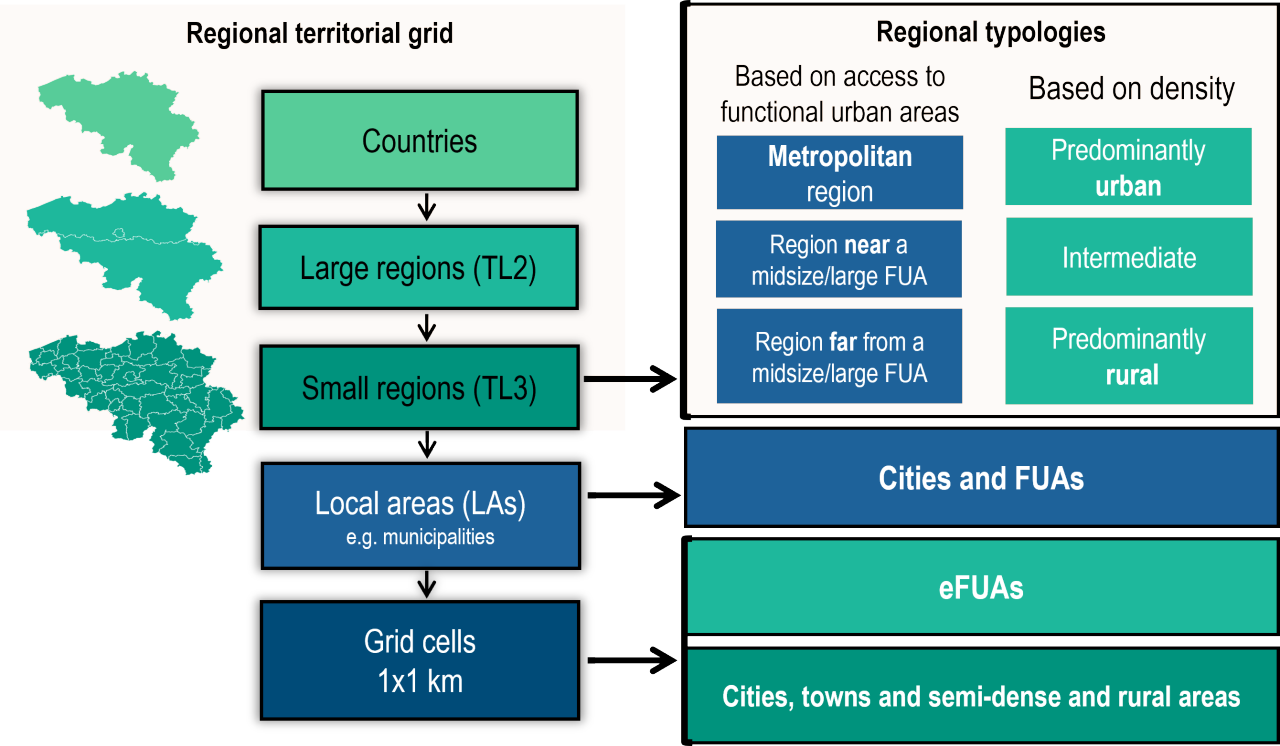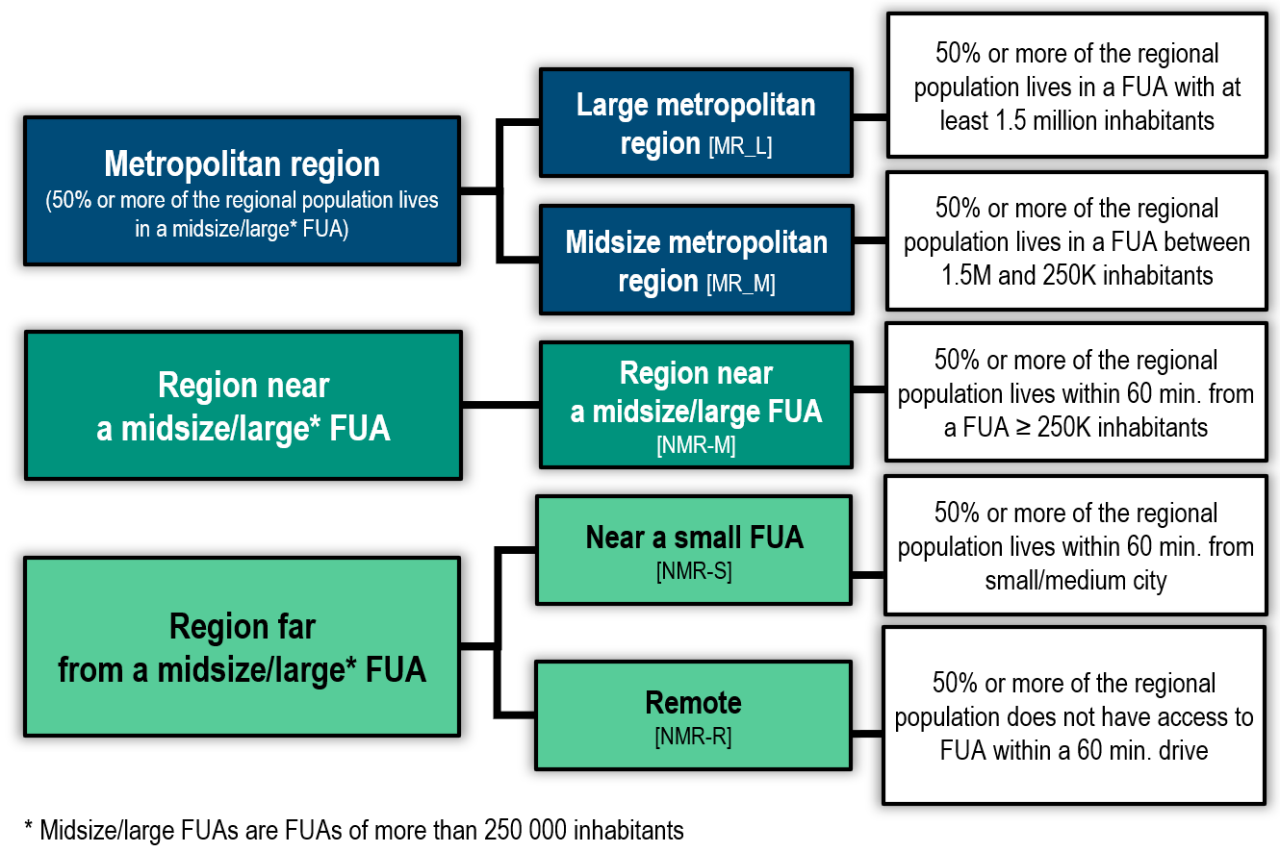The degree of urbanisation classification defines cities, towns and semi-dense areas, and rural areas. This document details the methodology. We use the degree of urbanisation typology for international comparison and in thematic work. Recent work includes Cities in the World: A New Perspective on Urbanisation and Regional Development along the Settlement Network.
OECD Geographical Definitions
International comparisons of subnational data require consistent frameworks. We provide such definitions and typologies for regions, cities and rural areas.
Overview of definitions

Definition of cities, towns and rural areas
Defining cities and functional urban areas
The OECD definition of functional urban areas (FUAs) captures meaningful connections between cities and their surrounding areas. The definition expands city boundaries to include economically connected areas. The OECD cities and functional urban areas database publishes indicators for FUAs.
Defining regions and territorial levels
Regions are subnational units below national boundaries. We define two territorial levels: large regions (TL2) and small regions (TL3). This classification facilitates comparability of geographic units across countries.
The OECD Territorial grid (pdf) and in the OECD Territorial correspondence table (xls) present the regions.
Territorial typologies
The OECD typology on access to cities offers a way to group small regions based on their population density and their distance to dense places. This document offers more details on the methodology.
The urban-rural typology offers another way of grouping small regions. The access to city typology has largely superseded this typology in OECD analyses.
The OECD regional database contains indicators by typology.

Share of population by typology on access to cities
Related data
-
DashboardBuilding our understanding of the COVID-19 crisis and recovery in regions. The health, economic and social impacts of the crisis have been uneven across and within countries – and recovery from the crisis, so far, has also been uneven. Understanding the spatial dimension of the recovery and developing place-based policies is vital to support recovery in all regions.
-
IndicatorTourism flows includes international arrivals and departures as well as nights spent in accommodation by visitors.
-
-
IndicatorTourism direct GDP corresponds to the part of GDP generated by all industries directly in contact with visitors.
-
IndicatorTourism receipts and spending are made up of travel credits and debits.

